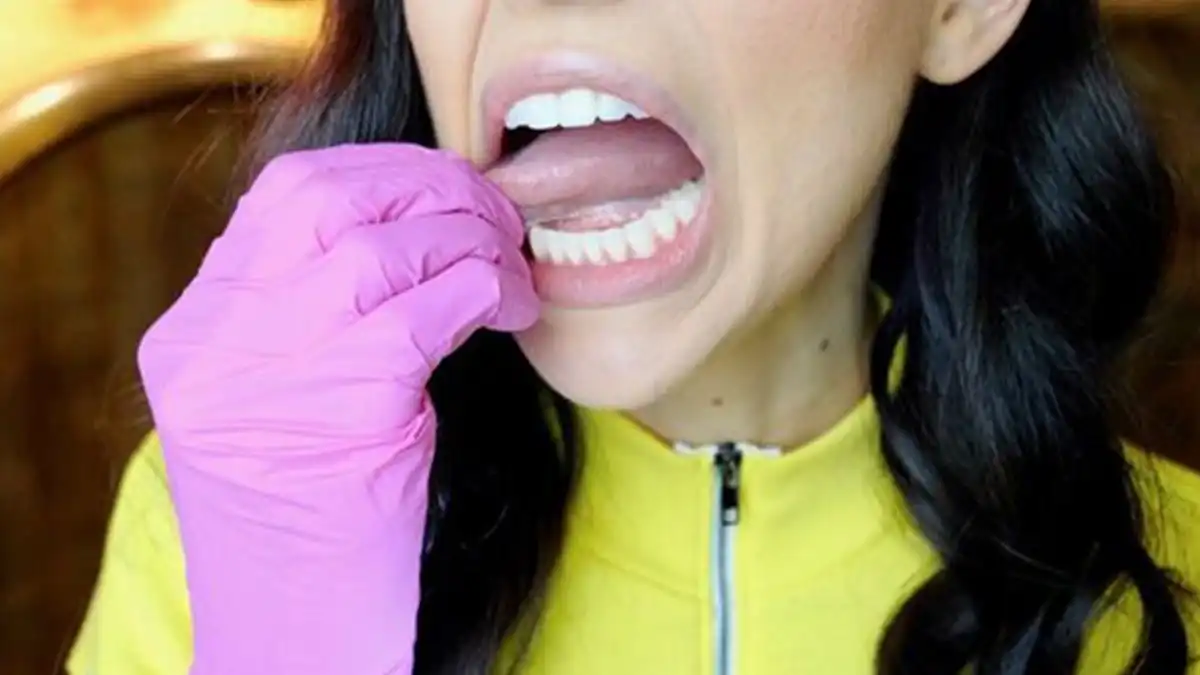Oral Cancer Self Examination: Signs & Symptoms


Oral cancer self-examinations can be performed routinely in your own home. When checking yourself, you may find random variants and weird looking things in your mouth that are 100% normal and healthy. Here’s a list of some things that may be found in your mouth which are considered normal anatomical variants: canker sores, cold sores, mandibular tori, palatal torus, fissured tongue, geographic tongue, amalgam tattoos, linea alba, exostosis, coated tongue, cheek bites, frenum attachment appearances, fordyce granules, and many more.
What To Look For
As you can tell - there are countless things within normal limits that can be found in your mouth - so please don’t panic if something looks off. It is very important to get professional oral cancer screenings at your routine dental visits, as well. The self-examination should only be used as an additional screening to your routine dental appointments. Keep in mind that dental professionals are aware of all the variants that can be present in your mouth - which will give you peace of mind if something looks funny.
The most common spots for oral cancer are the sides of the tongue and the floor of the mouth (underneath the tongue). Other spots can include your lips, cheek lining, gums, the front part of your tongue, and the hard and soft palates of the roof of your mouth and your throat.
How To Self Examine For Oral Cancer
Step 1: Tongue ‘N Gauze
Extend your tongue as far as it can go, examining the sides and underside for white and red patches, and feels your tongue for lumps. NOTE: This is the most common site of oral cancers in non-smokers.
Step 2: Lip & Cheek Roll
Feel for lumps or bumps, looking for white or red areas that should not be there.
Step 3: Double-Digit Probe
Examine the floor of your mouth from the top and bottom simultaneously for lumps, looking for white and red patches.
Step 4: Palate Tickle
Check the roof of your mouth for lumps and areas of softness on the hard palate, looking for white and red patches.
Step 5: Neck Caress
Palpate your neck for enlarged lymph nodes - which can be a possible sign of infection or something more serious.
Step 6: Tonsil Ahhhhhhh
Depress your tongue with a dental mirror or popsicle stick, examining your tonsils for symmetry, enlargement, redness, or unusual bumps.
Don’t Panic!
Now, if you happen to notice something that is clearly new in your mouth... please remember not to panic. Always give it about two weeks, and if it doesn’t go away by then, call your dentist to setup an appointment. Often times you will notice a cut on your cheek or gums from sharp foods (like chips or crackers) or you’ll notice a burn on the roof of your mouth from hot foods or hot beverages (like pizza or coffee). So, if you do see something concerning - try to think back on when you might have eaten something sharp or hot - or if you may have bit your cheek recently. Also remember the countless amount of normal variants that may be present in your mouth.
It’s a fine line between being too relaxed and too panicked - but it’s always important to take everything you find in your mouth seriously. So, educate yourself! Both sixstepscreening.org and checkyourmouth.org are great online resources to learn more about the signs and symptoms of oral cancer. If something looks suspicious in your mouth and you feel that something is wrong - just like with any other part of your body - call your doctor and or dentist to schedule an appointment.
Signs Of Oral Cancer
Lastly, here are some signs and symptoms (directly from sixstepscreening.org) that can relate to oral cancer:
- persistent mouth sores or irritations that don’t go away (red or white patches)
- pain, tenderness, or numbness in mouth, lips, or ear
- non-tender lumps, thickening, rough spots, crust or eroded areas
- chronic hoarseness
- abnormal swallowing, difficultly chewing, speaking or moving your tongue or jaw
- peculiar sore throat
- a change in the way your teeth fit together when you close your mouth
In conclusion, if you notice any of these, let your dentist know, especially if you’ve had them for two weeks or more. And make sure you’re getting professional oral cancer screenings at your routine dental appointments. If you’d like to see what an oral cancer screening actually looks like at the dentist - here is a video demonstrating dental office oral cancer screenings.

Make your inbox smile!
Subscribe






